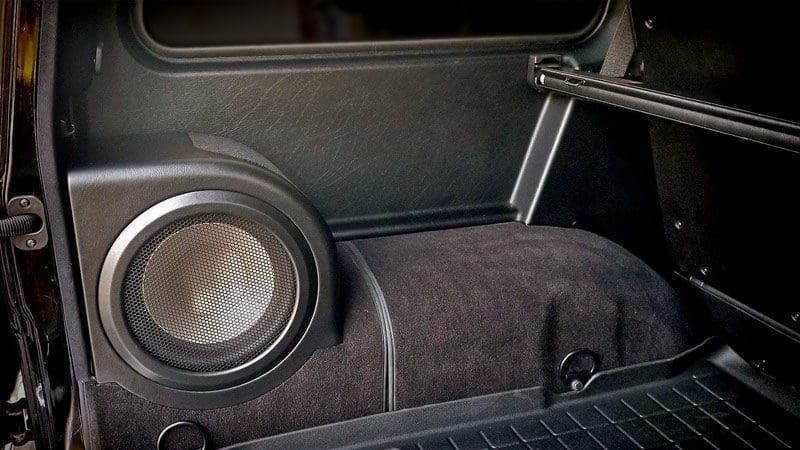 No single upgrade to an audio system offers a larger improvement in sound quality than the addition of a car audio subwoofer. Adding a subwoofer not only improves the low-frequency performance of your sound system, it can also improve the clarity of the entire system and enhance the volume level capabilities of the smaller speakers in your car. In this issue of Bang for Your Buck, we are going to look at a few popular subwoofer upgrade options available for adding bass to your vehicle.
No single upgrade to an audio system offers a larger improvement in sound quality than the addition of a car audio subwoofer. Adding a subwoofer not only improves the low-frequency performance of your sound system, it can also improve the clarity of the entire system and enhance the volume level capabilities of the smaller speakers in your car. In this issue of Bang for Your Buck, we are going to look at a few popular subwoofer upgrade options available for adding bass to your vehicle.
What is a Car Audio Subwoofer?
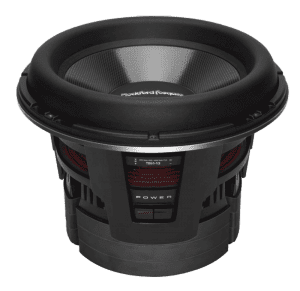 In the simplest of terms, a subwoofer is a large speaker designed to play frequencies below 100 Hz at relatively high output levels. Subwoofers are most commonly available in 10- and 12-inch sizes, but 6.5-, 8-, 13.5- and 15-inch subs are also readily available.
In the simplest of terms, a subwoofer is a large speaker designed to play frequencies below 100 Hz at relatively high output levels. Subwoofers are most commonly available in 10- and 12-inch sizes, but 6.5-, 8-, 13.5- and 15-inch subs are also readily available.
To reproduce low-frequency information with authority, a speaker has to move a lot of air. In fact, for every octave lower a speaker is to play, it has to move four times as far to produce the same volume level. If your sub is moving 1 mm back and forth at 80 Hz, it has to move 4 mm at 40 Hz and an impressive 16 mm at 20 Hz. Most people find a pulsing bass line of 40–50 Hz to be fun. That said, feeling the rumble of deep bass like the introduction to “Boom Boom Pow” by the Black Eyed Peas or the pulse in Pink Floyd’s “Time” can cause goosebumps.
Subwoofer Power Handling
Most people associate subwoofers with their power-handling capabilities. While not a direct determining factor in the quality of a subwoofer, power handling is important in terms of choosing the right subwoofer for your sound system. If you want to listen to your sound system at high volume levels, you need powerful amplifiers and speakers that can handle that power while being able to move adequately to reproduce sound at high levels. It is no surprise that the output and power handling are directly related, since it takes amplifier power to make a speaker cone move.
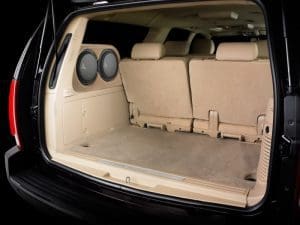 Picking “enough” subwoofer depends on several factors. How loud is loud enough? How much space can you afford to give the subwoofer system? How powerful of an amplifier can your vehicle’s electrical system support? It can be difficult to choose the right sub based on these criteria, especially since different vehicles offer different amounts of cabin gain. Would a single 10-inch sub in a sealed enclosure in the back of a Honda Fit be a suitable solution in a Cadillac Escalade or short-cab Ford F-150?
Picking “enough” subwoofer depends on several factors. How loud is loud enough? How much space can you afford to give the subwoofer system? How powerful of an amplifier can your vehicle’s electrical system support? It can be difficult to choose the right sub based on these criteria, especially since different vehicles offer different amounts of cabin gain. Would a single 10-inch sub in a sealed enclosure in the back of a Honda Fit be a suitable solution in a Cadillac Escalade or short-cab Ford F-150?
Custom-built Subwoofer Solutions
Your best choice to upgrade your vehicle with a subwoofer is to have your local mobile electronics specialist retailer design and construct a subwoofer system that is specific to your vehicle and your expectations. This process will start with your input in determining just how much bass you want. From there, your system designer can suggest a subwoofer or subwoofers that will meet your expectations.
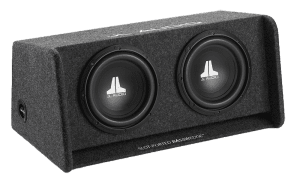 The next step is to decide where to install the subs. The simplest of custom enclosures would be a rectangular wooden cabinet that sits in the trunk or cargo area of your vehicle. The dimensions of the enclosure can be optimized to make the most use of the available space. This optimization may include angling the back of the enclosure to follow the angle of the seats.
The next step is to decide where to install the subs. The simplest of custom enclosures would be a rectangular wooden cabinet that sits in the trunk or cargo area of your vehicle. The dimensions of the enclosure can be optimized to make the most use of the available space. This optimization may include angling the back of the enclosure to follow the angle of the seats.
Depending on your goals and expectations, you may choose to have the enclosure finished in a material that matches the interior. For a more-customized look, you may want the enclosure wrapped in vinyl that is the same color and grain as the trim panels in your vehicle.
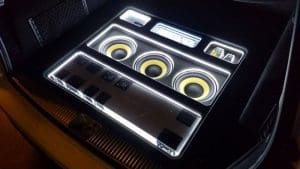 If you want something truly unique, then ask about including LED lighting in the enclosure. You can choose to have a Lexan or Plexiglas window added and illuminate the interior of the enclosure or add acrylic plastic accent pieces that light up. Upgrades at this level are often combined with enclosures finished with multiple materials – different colors of vinyl can provide amazing cosmetics.
If you want something truly unique, then ask about including LED lighting in the enclosure. You can choose to have a Lexan or Plexiglas window added and illuminate the interior of the enclosure or add acrylic plastic accent pieces that light up. Upgrades at this level are often combined with enclosures finished with multiple materials – different colors of vinyl can provide amazing cosmetics.
Advanced Subwoofer Enclosure Designs
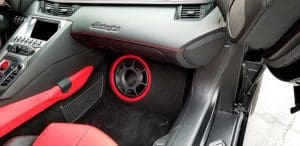 The next step, beyond a simple wooden enclosure, would be one that is shaped to fit the unique contours of your vehicle. Enclosures of this type are often built using a combination of wood and fiberglass or layers of wood that are stacked one on top of another to create complex contours. The most-common application like this is where a subwoofer is being fitted into the corner of a trunk or hatch area, but is also often placed under the trunk floor in a spare tire well. The passenger-side footwell of a two-seat vehicle is another popular location for this type of enclosure.
The next step, beyond a simple wooden enclosure, would be one that is shaped to fit the unique contours of your vehicle. Enclosures of this type are often built using a combination of wood and fiberglass or layers of wood that are stacked one on top of another to create complex contours. The most-common application like this is where a subwoofer is being fitted into the corner of a trunk or hatch area, but is also often placed under the trunk floor in a spare tire well. The passenger-side footwell of a two-seat vehicle is another popular location for this type of enclosure.
Due to the complexity of these enclosures, they will typically cost more. The trade-off is that they integrate better into your vehicle – providing you with the acoustic performance you want without taking up valuable cargo area.
Application-specific Subwoofer Systems
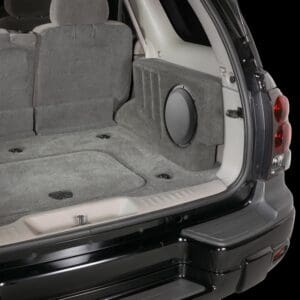 Companies like JL Audio, MTX and Kicker offer subwoofer systems designed for specific models of vehicles. These enclosures are designed to offer impressive performance while minimizing how much space they use. Some companies construct these enclosures from fiberglass in large molds, while others use thick plastics. In most cases, while these enclosures are visible once installed, they are available in materials that match the color of the vehicle interior. An application-specific enclosure is a great way to add amazing bass to a vehicle quickly and efficiently.
Companies like JL Audio, MTX and Kicker offer subwoofer systems designed for specific models of vehicles. These enclosures are designed to offer impressive performance while minimizing how much space they use. Some companies construct these enclosures from fiberglass in large molds, while others use thick plastics. In most cases, while these enclosures are visible once installed, they are available in materials that match the color of the vehicle interior. An application-specific enclosure is a great way to add amazing bass to a vehicle quickly and efficiently.
A subsection of these application-specific enclosures is truck boxes. No, not the thin, wedge-style enclosures that fit behind the seat, but complex enclosures that use the space under a rear bench seat in a pickup. Companies like Audio Enhancers, Bassworx and Atrend offer cost-effective solutions that will accept the subwoofer of your choice. In most of these applications, you need a shallow subwoofer because mounting depth is quite limited.
Shallow Subwoofers
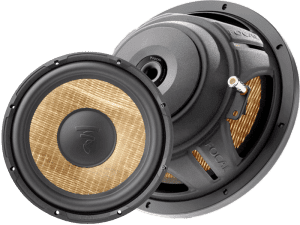 You’ll note that we haven’t discussed the specific features of subwoofers that differentiate one from another. This omission is quite deliberate because we will dedicate an entire article to that topic. In the meantime, it is worth discussing the difference between a conventional subwoofer and a shallow-mount design.
You’ll note that we haven’t discussed the specific features of subwoofers that differentiate one from another. This omission is quite deliberate because we will dedicate an entire article to that topic. In the meantime, it is worth discussing the difference between a conventional subwoofer and a shallow-mount design.
Shallow subwoofers were originally designed for use behind the seat of a pickup truck. Shallow cones, baskets and motor structures provide mounting depths of around 3 to 3.5 inches. Historically, the tradeoff for this reduced mounting depth has been a dramatic decrease in cone excursion capability. Over the past few years, companies like JL Audio, Illusion Audio, Kicker, Focal, Rockford Fosgate, ARC Audio and Audiomobile have worked hard to maximize the performance of their shallow-mount subwoofers to the point that they offer similar, if not better, performance than some conventional designs.
Audition a Subwoofer System Today!
We will leave you with this as the starting point for choosing a subwoofer solution for your vehicle. In the next article, we’ll explain the performance benefits and drawbacks of different subwoofer enclosure designs, then wrap up our buyer’s guide series with an explanation of advanced subwoofer design features that offer audible improvements in performance. Until then, visit your local specialist mobile enhancement retailer and audition one of their demo vehicles that has a subwoofer. We are sure you’ll be impressed and want one for your car or truck.
 No single upgrade to an audio system offers a larger improvement in sound quality than the addition of a car audio subwoofer. Adding a subwoofer not only improves the low-frequency performance of your sound system, it can also improve the clarity of the entire system and enhance the volume level capabilities of the smaller speakers in your car. In this issue of Bang for Your Buck, we are going to look at a few popular subwoofer upgrade options available for adding bass to your vehicle.
No single upgrade to an audio system offers a larger improvement in sound quality than the addition of a car audio subwoofer. Adding a subwoofer not only improves the low-frequency performance of your sound system, it can also improve the clarity of the entire system and enhance the volume level capabilities of the smaller speakers in your car. In this issue of Bang for Your Buck, we are going to look at a few popular subwoofer upgrade options available for adding bass to your vehicle.
What is a Car Audio Subwoofer?
 In the simplest of terms, a subwoofer is a large speaker designed to play frequencies below 100 Hz at relatively high output levels. Subwoofers are most commonly available in 10- and 12-inch sizes, but 6.5-, 8-, 13.5- and 15-inch subs are also readily available.
In the simplest of terms, a subwoofer is a large speaker designed to play frequencies below 100 Hz at relatively high output levels. Subwoofers are most commonly available in 10- and 12-inch sizes, but 6.5-, 8-, 13.5- and 15-inch subs are also readily available.
To reproduce low-frequency information with authority, a speaker has to move a lot of air. In fact, for every octave lower a speaker is to play, it has to move four times as far to produce the same volume level. If your sub is moving 1 mm back and forth at 80 Hz, it has to move 4 mm at 40 Hz and an impressive 16 mm at 20 Hz. Most people find a pulsing bass line of 40–50 Hz to be fun. That said, feeling the rumble of deep bass like the introduction to “Boom Boom Pow” by the Black Eyed Peas or the pulse in Pink Floyd’s “Time” can cause goosebumps.
Subwoofer Power Handling
Most people associate subwoofers with their power-handling capabilities. While not a direct determining factor in the quality of a subwoofer, power handling is important in terms of choosing the right subwoofer for your sound system. If you want to listen to your sound system at high volume levels, you need powerful amplifiers and speakers that can handle that power while being able to move adequately to reproduce sound at high levels. It is no surprise that the output and power handling are directly related, since it takes amplifier power to make a speaker cone move.
 Picking “enough” subwoofer depends on several factors. How loud is loud enough? How much space can you afford to give the subwoofer system? How powerful of an amplifier can your vehicle’s electrical system support? It can be difficult to choose the right sub based on these criteria, especially since different vehicles offer different amounts of cabin gain. Would a single 10-inch sub in a sealed enclosure in the back of a Honda Fit be a suitable solution in a Cadillac Escalade or short-cab Ford F-150?
Picking “enough” subwoofer depends on several factors. How loud is loud enough? How much space can you afford to give the subwoofer system? How powerful of an amplifier can your vehicle’s electrical system support? It can be difficult to choose the right sub based on these criteria, especially since different vehicles offer different amounts of cabin gain. Would a single 10-inch sub in a sealed enclosure in the back of a Honda Fit be a suitable solution in a Cadillac Escalade or short-cab Ford F-150?
Custom-built Subwoofer Solutions
Your best choice to upgrade your vehicle with a subwoofer is to have your local mobile electronics specialist retailer design and construct a subwoofer system that is specific to your vehicle and your expectations. This process will start with your input in determining just how much bass you want. From there, your system designer can suggest a subwoofer or subwoofers that will meet your expectations.
 The next step is to decide where to install the subs. The simplest of custom enclosures would be a rectangular wooden cabinet that sits in the trunk or cargo area of your vehicle. The dimensions of the enclosure can be optimized to make the most use of the available space. This optimization may include angling the back of the enclosure to follow the angle of the seats.
The next step is to decide where to install the subs. The simplest of custom enclosures would be a rectangular wooden cabinet that sits in the trunk or cargo area of your vehicle. The dimensions of the enclosure can be optimized to make the most use of the available space. This optimization may include angling the back of the enclosure to follow the angle of the seats.
Depending on your goals and expectations, you may choose to have the enclosure finished in a material that matches the interior. For a more-customized look, you may want the enclosure wrapped in vinyl that is the same color and grain as the trim panels in your vehicle.
 If you want something truly unique, then ask about including LED lighting in the enclosure. You can choose to have a Lexan or Plexiglas window added and illuminate the interior of the enclosure or add acrylic plastic accent pieces that light up. Upgrades at this level are often combined with enclosures finished with multiple materials – different colors of vinyl can provide amazing cosmetics.
If you want something truly unique, then ask about including LED lighting in the enclosure. You can choose to have a Lexan or Plexiglas window added and illuminate the interior of the enclosure or add acrylic plastic accent pieces that light up. Upgrades at this level are often combined with enclosures finished with multiple materials – different colors of vinyl can provide amazing cosmetics.
Advanced Subwoofer Enclosure Designs
 The next step, beyond a simple wooden enclosure, would be one that is shaped to fit the unique contours of your vehicle. Enclosures of this type are often built using a combination of wood and fiberglass or layers of wood that are stacked one on top of another to create complex contours. The most-common application like this is where a subwoofer is being fitted into the corner of a trunk or hatch area, but is also often placed under the trunk floor in a spare tire well. The passenger-side footwell of a two-seat vehicle is another popular location for this type of enclosure.
The next step, beyond a simple wooden enclosure, would be one that is shaped to fit the unique contours of your vehicle. Enclosures of this type are often built using a combination of wood and fiberglass or layers of wood that are stacked one on top of another to create complex contours. The most-common application like this is where a subwoofer is being fitted into the corner of a trunk or hatch area, but is also often placed under the trunk floor in a spare tire well. The passenger-side footwell of a two-seat vehicle is another popular location for this type of enclosure.
Due to the complexity of these enclosures, they will typically cost more. The trade-off is that they integrate better into your vehicle – providing you with the acoustic performance you want without taking up valuable cargo area.
Application-specific Subwoofer Systems
 Companies like JL Audio, MTX and Kicker offer subwoofer systems designed for specific models of vehicles. These enclosures are designed to offer impressive performance while minimizing how much space they use. Some companies construct these enclosures from fiberglass in large molds, while others use thick plastics. In most cases, while these enclosures are visible once installed, they are available in materials that match the color of the vehicle interior. An application-specific enclosure is a great way to add amazing bass to a vehicle quickly and efficiently.
Companies like JL Audio, MTX and Kicker offer subwoofer systems designed for specific models of vehicles. These enclosures are designed to offer impressive performance while minimizing how much space they use. Some companies construct these enclosures from fiberglass in large molds, while others use thick plastics. In most cases, while these enclosures are visible once installed, they are available in materials that match the color of the vehicle interior. An application-specific enclosure is a great way to add amazing bass to a vehicle quickly and efficiently.
A subsection of these application-specific enclosures is truck boxes. No, not the thin, wedge-style enclosures that fit behind the seat, but complex enclosures that use the space under a rear bench seat in a pickup. Companies like Audio Enhancers, Bassworx and Atrend offer cost-effective solutions that will accept the subwoofer of your choice. In most of these applications, you need a shallow subwoofer because mounting depth is quite limited.
Shallow Subwoofers
 You’ll note that we haven’t discussed the specific features of subwoofers that differentiate one from another. This omission is quite deliberate because we will dedicate an entire article to that topic. In the meantime, it is worth discussing the difference between a conventional subwoofer and a shallow-mount design.
You’ll note that we haven’t discussed the specific features of subwoofers that differentiate one from another. This omission is quite deliberate because we will dedicate an entire article to that topic. In the meantime, it is worth discussing the difference between a conventional subwoofer and a shallow-mount design.
Shallow subwoofers were originally designed for use behind the seat of a pickup truck. Shallow cones, baskets and motor structures provide mounting depths of around 3 to 3.5 inches. Historically, the tradeoff for this reduced mounting depth has been a dramatic decrease in cone excursion capability. Over the past few years, companies like JL Audio, Illusion Audio, Kicker, Focal, Rockford Fosgate, ARC Audio and Audiomobile have worked hard to maximize the performance of their shallow-mount subwoofers to the point that they offer similar, if not better, performance than some conventional designs.
Audition a Subwoofer System Today!
We will leave you with this as the starting point for choosing a subwoofer solution for your vehicle. In the next article, we’ll explain the performance benefits and drawbacks of different subwoofer enclosure designs, then wrap up our buyer’s guide series with an explanation of advanced subwoofer design features that offer audible improvements in performance. Until then, visit your local specialist mobile enhancement retailer and audition one of their demo vehicles that has a subwoofer. We are sure you’ll be impressed and want one for your car or truck.
This article is written and produced by the team at www.BestCarAudio.com. Reproduction or use of any kind is prohibited without the express written permission of 1sixty8 media.
 When it comes to designing
When it comes to designing  Up until recently, most recording studios used a pair of high-quality
Up until recently, most recording studios used a pair of high-quality  There are lots of ways to describe the experience of having the music come from all around the vehicle, but the analogy of a nightclub or – as we old fogies like to call them – a disco might work best. The concept here is that the music will seem to come from all around you. Unlike a performance where you can point to the source of sound from each instrument, it envelops the listening space. In most of these systems, we still balance the system with dedicated left and right channels.
There are lots of ways to describe the experience of having the music come from all around the vehicle, but the analogy of a nightclub or – as we old fogies like to call them – a disco might work best. The concept here is that the music will seem to come from all around you. Unlike a performance where you can point to the source of sound from each instrument, it envelops the listening space. In most of these systems, we still balance the system with dedicated left and right channels. You may have noticed that we haven’t talked about a live performance that takes place in a concert hall or indoor venue. This has been quite deliberate.
You may have noticed that we haven’t talked about a live performance that takes place in a concert hall or indoor venue. This has been quite deliberate.
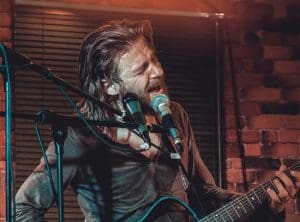 Another option is to use a signal processor to create a sense of room size. In the 1990s and 2000s, lots of processors had presets for jazz, concert and club settings that added reverberation and delay to dedicated rear channel outputs. These technologies have evolved to more-advanced processing algorithms like Bose Panaray and Quantum Logic Surround from Harman. These systems can analyze the content of a stereo recording and extract information that should be reproduced by side and rear speakers to create an immersive listening experience. If your vehicle has one of these technologies, your
Another option is to use a signal processor to create a sense of room size. In the 1990s and 2000s, lots of processors had presets for jazz, concert and club settings that added reverberation and delay to dedicated rear channel outputs. These technologies have evolved to more-advanced processing algorithms like Bose Panaray and Quantum Logic Surround from Harman. These systems can analyze the content of a stereo recording and extract information that should be reproduced by side and rear speakers to create an immersive listening experience. If your vehicle has one of these technologies, your 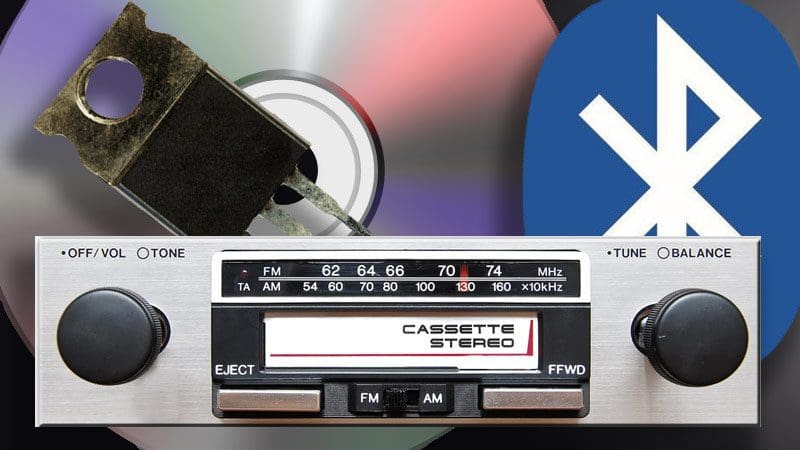 Just as the invention of the transistor eliminated the need for vacuum tubes, advances in technology allow us to create new and unique entertainment solutions with more and more features. We thought it would be fun to take a quick look at a few important car audio technologies throughout history.
Just as the invention of the transistor eliminated the need for vacuum tubes, advances in technology allow us to create new and unique entertainment solutions with more and more features. We thought it would be fun to take a quick look at a few important car audio technologies throughout history.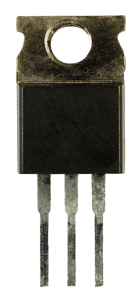 The first car
The first car 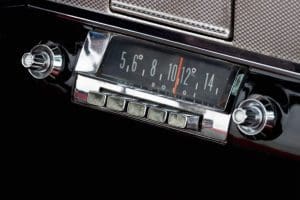 Radio was truly the technology that drove car audio systems. The first radio broadcasts were weekly special events that included concerts in 1914 and daily news broadcasts in 1916. On May 20, 1920, XWA – the experimental station of the Canadian Marconi Co. – began regular broadcasts in Montreal. XWA claims status as the first commercial broadcaster in the world. These were all AM (amplitude modulation) stations. FM (frequency modulation) radio was patented in 1933, but it wasn’t until the late ’30s that FM broadcasts became popular. The broadcast of a stereo FM signal was first considered by the FCC in the late 1950s, and a standard was approved in 1961.
Radio was truly the technology that drove car audio systems. The first radio broadcasts were weekly special events that included concerts in 1914 and daily news broadcasts in 1916. On May 20, 1920, XWA – the experimental station of the Canadian Marconi Co. – began regular broadcasts in Montreal. XWA claims status as the first commercial broadcaster in the world. These were all AM (amplitude modulation) stations. FM (frequency modulation) radio was patented in 1933, but it wasn’t until the late ’30s that FM broadcasts became popular. The broadcast of a stereo FM signal was first considered by the FCC in the late 1950s, and a standard was approved in 1961. Reel-to-reel recording on magnetic tapes was popular in the 1940s but wasn’t suitable for use in mobile applications. The 8-track was preceded by the Stereo-Pak 4-track cartridge in 1962. The endless-loop cartridge could store both sides of a vinyl album. The 8-track, known originally as the Lear Jet Stereo 8 Track Cartridge, was launched by Bill Lear in 1963. In 1965, Ford offered factory and dealer-installed 8-track options on its Mustang and Thunderbird and on several high-end Lincoln vehicles.
Reel-to-reel recording on magnetic tapes was popular in the 1940s but wasn’t suitable for use in mobile applications. The 8-track was preceded by the Stereo-Pak 4-track cartridge in 1962. The endless-loop cartridge could store both sides of a vinyl album. The 8-track, known originally as the Lear Jet Stereo 8 Track Cartridge, was launched by Bill Lear in 1963. In 1965, Ford offered factory and dealer-installed 8-track options on its Mustang and Thunderbird and on several high-end Lincoln vehicles.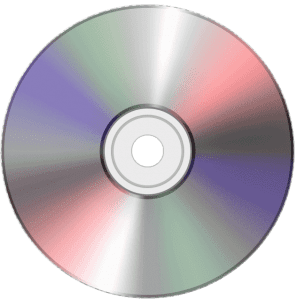 Most people don’t realize that digital audio (known then as pulse code modulation) was invented in 1937 in Britain and was used in telecommunications. In the late ’60s, Denon pioneered commercial digital recording. The BBC used digital audio transmissions to link its broadcast center to its transmitter in 1972. Sony and Mitsubishi drove the consumer popularization of digital audio in the early ’80s and brought about acceptance by major record companies. The first compact disc was released in 1982 using the Red Book Compact Disc Digital Audio (CD-DA) standard that is still in use today. The first OEM-installed CD players were in the 1987 Lincoln Town Car.
Most people don’t realize that digital audio (known then as pulse code modulation) was invented in 1937 in Britain and was used in telecommunications. In the late ’60s, Denon pioneered commercial digital recording. The BBC used digital audio transmissions to link its broadcast center to its transmitter in 1972. Sony and Mitsubishi drove the consumer popularization of digital audio in the early ’80s and brought about acceptance by major record companies. The first compact disc was released in 1982 using the Red Book Compact Disc Digital Audio (CD-DA) standard that is still in use today. The first OEM-installed CD players were in the 1987 Lincoln Town Car. The benefit of Class D amplifiers is their efficiency and low-to-moderate power levels. Class D amps use high-frequency pulse-width modulation waveforms to switch MOSFETs (metal-oxide-semiconductor field-effect transistors) on and off very quickly to amplify signals. Filter networks on the output of the circuits remove high-frequency noise so that only the audio signal is left to drive our speakers. Class D amplifiers allow manufacturers to produce much more powerful amplifiers that take up very little space. These amplifiers consume less current than their Class AB counterparts.
The benefit of Class D amplifiers is their efficiency and low-to-moderate power levels. Class D amps use high-frequency pulse-width modulation waveforms to switch MOSFETs (metal-oxide-semiconductor field-effect transistors) on and off very quickly to amplify signals. Filter networks on the output of the circuits remove high-frequency noise so that only the audio signal is left to drive our speakers. Class D amplifiers allow manufacturers to produce much more powerful amplifiers that take up very little space. These amplifiers consume less current than their Class AB counterparts. The Apple iPod was introduced in the fall of 2001. The original compact digital media players were only compatible with computers running the Apple Macintosh operating system and as such, sales were limited. In 2003, the iPod 3G was launched with a standard USB port instead of Firewire, making it compatible with Windows-based PCs as well. By June 2003, Apple had sold 1 million iPods.
The Apple iPod was introduced in the fall of 2001. The original compact digital media players were only compatible with computers running the Apple Macintosh operating system and as such, sales were limited. In 2003, the iPod 3G was launched with a standard USB port instead of Firewire, making it compatible with Windows-based PCs as well. By June 2003, Apple had sold 1 million iPods. Though incorrectly perceived as a hands-free and audio streaming technology,
Though incorrectly perceived as a hands-free and audio streaming technology,  Since the very first car radios were built, people were concerned about them being a distraction. Turning the tuner knob to find a local station meant you weren’t focused on the road in front of you. In the late ’90s, we saw drivers with headsets and earpieces making phone calls while they drove. Adding a headset was a common purchase with a new phone. In the mid-2000s, Bluetooth communication replaced wired hands-free connections.
Since the very first car radios were built, people were concerned about them being a distraction. Turning the tuner knob to find a local station meant you weren’t focused on the road in front of you. In the late ’90s, we saw drivers with headsets and earpieces making phone calls while they drove. Adding a headset was a common purchase with a new phone. In the mid-2000s, Bluetooth communication replaced wired hands-free connections.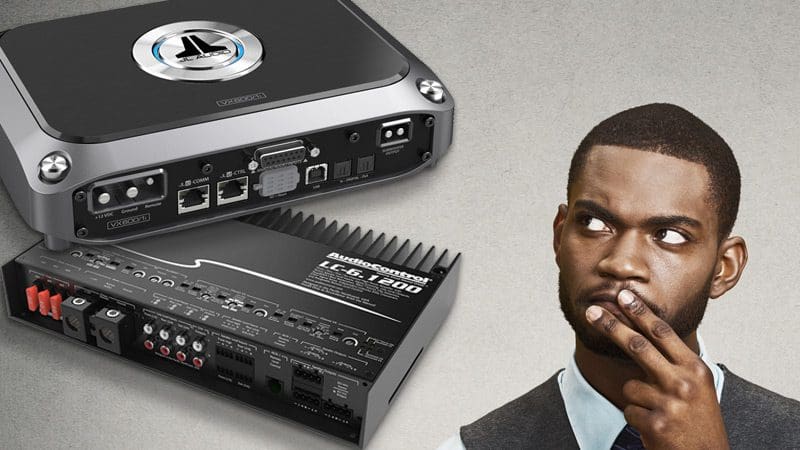 In our Bang for your Buck series, we talk about product features and component designs that offer increased value and performance. We’ve discussed source units and speakers, and now it’s time to take a deep look into amplifiers and what separates one amplifier from another.
In our Bang for your Buck series, we talk about product features and component designs that offer increased value and performance. We’ve discussed source units and speakers, and now it’s time to take a deep look into amplifiers and what separates one amplifier from another.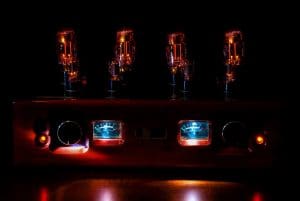 For decades, manufacturers of high-end amplifiers have provided damping factory specifications. This number is a ratio of the output impedance of the amplifier to a specified load impedance. The story goes that an amplifier with a higher number would produce a tighter, more-controlled sound because the low impedance of the amp would short the back-EMF signal from the speaker.
For decades, manufacturers of high-end amplifiers have provided damping factory specifications. This number is a ratio of the output impedance of the amplifier to a specified load impedance. The story goes that an amplifier with a higher number would produce a tighter, more-controlled sound because the low impedance of the amp would short the back-EMF signal from the speaker.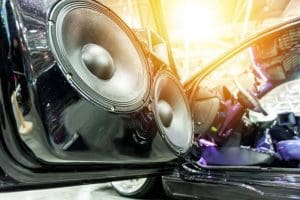 Any electronic device creates unwanted noise when a signal passes through it. Even something as simple as a resistor creates a small amount of noise. In this example, it’s likely too small to be audible – but it’s there. In a complex circuit with gain (an increase in signal amplitude), creating unwanted noise is a common byproduct of questionable design.
Any electronic device creates unwanted noise when a signal passes through it. Even something as simple as a resistor creates a small amount of noise. In this example, it’s likely too small to be audible – but it’s there. In a complex circuit with gain (an increase in signal amplitude), creating unwanted noise is a common byproduct of questionable design.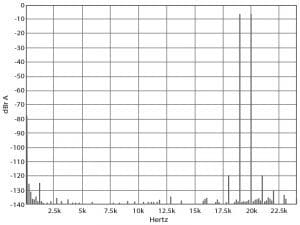 The image above shows amazing performance from a very high-end solid-state home amplifier. As you can see, there is a little bit of 150 and 175 Hz content, but it is at almost -120 dB below the stimulus signal.
The image above shows amazing performance from a very high-end solid-state home amplifier. As you can see, there is a little bit of 150 and 175 Hz content, but it is at almost -120 dB below the stimulus signal. In this example, we can see the harmonics created in a high-end home audio Class D amplifier. A 100 Hz signal is present at a level of -85 dB and a 250 Hz signal is present at a level of -90 dB.
In this example, we can see the harmonics created in a high-end home audio Class D amplifier. A 100 Hz signal is present at a level of -85 dB and a 250 Hz signal is present at a level of -90 dB. To really highlight the potential for unwanted behavior, we have included the spectral content of a high-end vacuum tube amplifier. You can see that there is spectral content at 100 Hz at a level of -42 dB, 150Hz content at -54 dB and 200 Hz content at -67 dB. This distortion would be audible during listening.
To really highlight the potential for unwanted behavior, we have included the spectral content of a high-end vacuum tube amplifier. You can see that there is spectral content at 100 Hz at a level of -42 dB, 150Hz content at -54 dB and 200 Hz content at -67 dB. This distortion would be audible during listening. This graph shows the same Class D as in the discussion of harmonic distortion. It is easy to see that the test stimulae created a significant amount of information. The peak is at -78 dB, so it’s not a complete disaster.
This graph shows the same Class D as in the discussion of harmonic distortion. It is easy to see that the test stimulae created a significant amount of information. The peak is at -78 dB, so it’s not a complete disaster.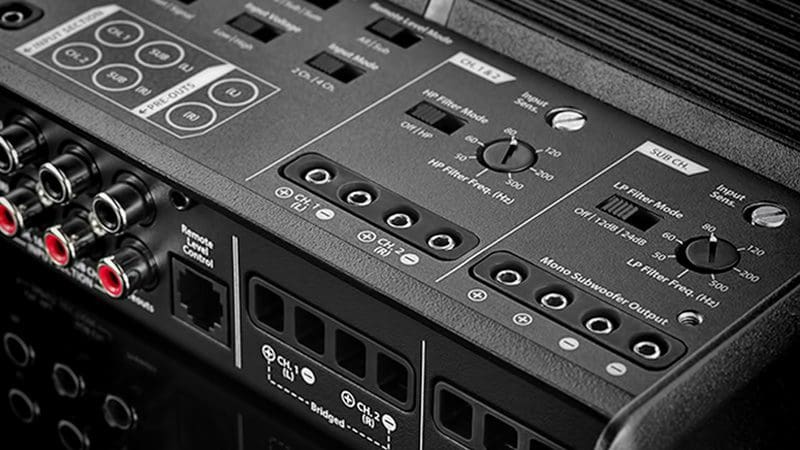 Shopping for a new
Shopping for a new 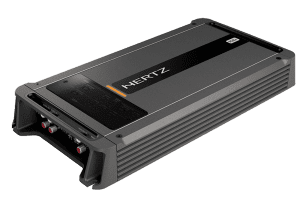
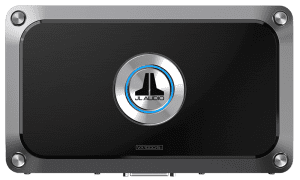
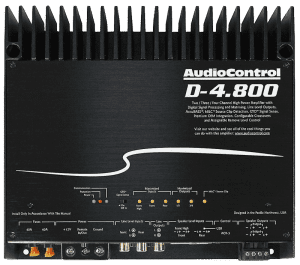
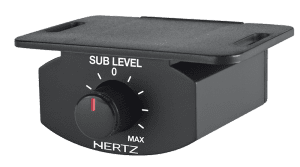 If you are going to use the amp you have chosen to drive a
If you are going to use the amp you have chosen to drive a 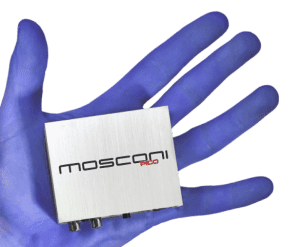
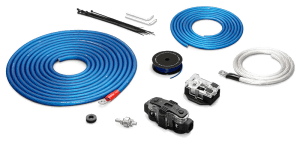 The second-to-last step in choosing an amplifier for your vehicle is to choose the right installation accessories for it. No, we aren’t talking about chrome shrouds or lighting kits. Your choice of power wire can have a dramatic effect on the performance and reliability of your amplifier. It might sound like a sales pitch, but don’t be stingy with the wiring you choose. A $40 amp kit with 1,000-watts printed on the package may look like a deal, but do you think it will supply power to your amp the same way a $100 kit will?
The second-to-last step in choosing an amplifier for your vehicle is to choose the right installation accessories for it. No, we aren’t talking about chrome shrouds or lighting kits. Your choice of power wire can have a dramatic effect on the performance and reliability of your amplifier. It might sound like a sales pitch, but don’t be stingy with the wiring you choose. A $40 amp kit with 1,000-watts printed on the package may look like a deal, but do you think it will supply power to your amp the same way a $100 kit will?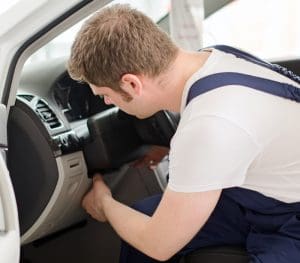 Last and certainly not least is your choice of who will install your amplifier. Cars and trucks aren’t as simple as they used to be. Composite construction, aluminum, high-strength adhesives, computer data networks and BCM-controlled charging systems require that someone with extensive experience work on your vehicle. Assuming that your new car or truck is like every other vehicle they have worked on is a recipe for disaster.
Last and certainly not least is your choice of who will install your amplifier. Cars and trucks aren’t as simple as they used to be. Composite construction, aluminum, high-strength adhesives, computer data networks and BCM-controlled charging systems require that someone with extensive experience work on your vehicle. Assuming that your new car or truck is like every other vehicle they have worked on is a recipe for disaster.